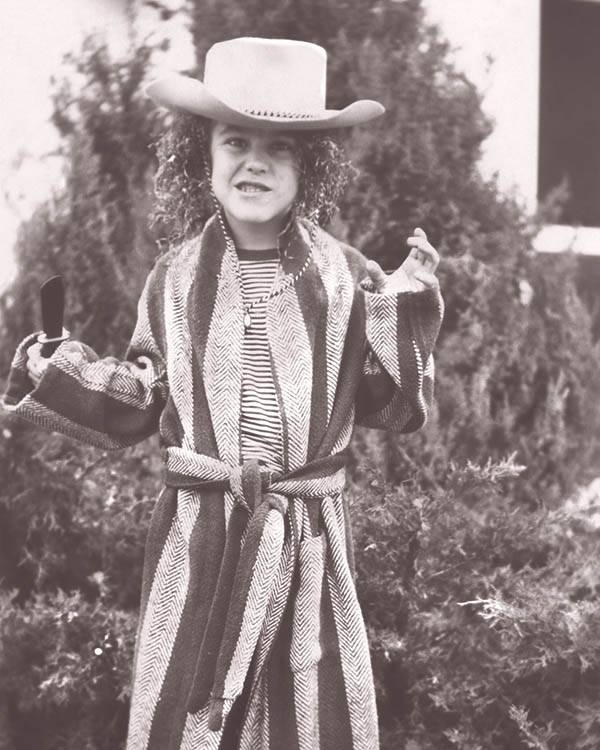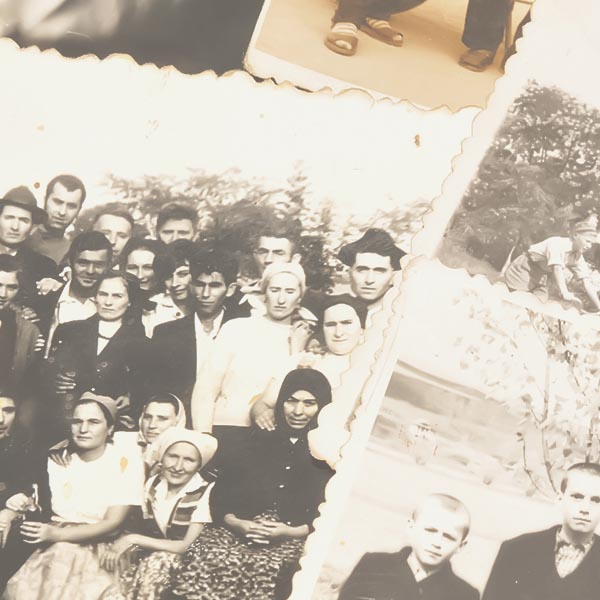Protect and Store Old Photos Properly. Don't Just Run Around With Your Shirt Off and Your Tongue Hanging out, Doofus!
Who hasn't ruined at least one photo in their lifetime? Fortunately, we have a few ideas about all those situations where photos inadvertently become damaged. Of course, photos that are intentionally damaged are not covered here (such as that one photo of your old girlfriend that your new girlfriend threw in the shredder). So, without further delay, here we go.
Part One: What You are Up Against
Think we’ve reached a completely digital age? Even in the fast-paced modern world, looking at photographs is still one of the best ways to cement your links to the past. Unfortunately, when it comes to preserving these irreplaceable memories, many people fall short. So, why Is Good Photograph Storage so Important?
There’s something undeniably personal about the experience of thumbing through a scrapbook or holding a photograph print. Merely having the physical object in hand connects you to your memories in ways that computers and phones just can’t. I'm not positive, but that makes them almost sound like money!
Of course, nothing material lasts forever. Time wears away originals and reproductions, and at some point, you’ll need photo repairs.
Although modern photo retouching methods benefit greatly from digital tools and techniques, computers can only work so much magic. Most photo refinishing experts still depend on having somewhat-intact source materials to work from. The better you take care of your cherished photos, the easier they’ll be to fix and share with your loved ones. Here are some insights into the challenges you face.
The Problems of Photo Preservation
Photos just aren’t made to withstand the forces of time indefinitely. Short of being kept behind museum glass in hermetically sealed environments, photographic paper wears down and decomposes. Although your favorite prints won’t disintegrate into dust overnight, storing them unprotected in your home may be as good as tearing them up yourself. There are many factors to watch out for, including:
Sunlight - Photographs HATE it.
Natural lighting is essential for taking great photos, but it's not so good for ensuring that they stay intact. If you’re smart, you’ll keep your reproductions away from the light when you’re not actively looking at them.
The Dangers of Solar Rays
The sun’s UV rays are a high-energy form of radiation. When they strike your photos, they can break down everything from the pigments that define the colors to the chemicals that bind them to the photo paper. In the presence of the sun, photos may fade, begin peeling or develop cracks and spots.
Glass materials such as window panes block a significant portion of the UV light that enters your home, but they won’t completely shield your photographs. Many people even observe that their framed photos begin developing patterned discolorations over time, and these flaws often mirror the way the sun streams through their curtains or windows during the day. A photo restoration service may be the only option following such harsh exposure.

Whew... It's Getting HOT in here... The problem with heat creating damaged photos.
What happens to your photos as the climate changes? Although you may love warmer weather, heat is a photograph's worst enemy. In Texas and other southern states, the ill effects of high temperatures can be even more pronounced.
Why Your Photos Need to Stay Cool
High-heat conditions negatively impact the rate at which your photos naturally degrade and cause them to warp or curl. Some photographs begin to wrinkle as their layers separate and change shape. If your prints are mounted on materials that expand and contract at different rates than they do, temperature exposure may result in distortion and visual cracking.
Heat exposure often occurs in unexpected places. For instance, many people store their photos and NON acid-free albums out of sight in closets and other spaces without accounting for seasonal temperature fluctuations. Given sufficient time, hot attics can cause extreme damage and make it much harder to fix old photos.

Atmospheric Conditions
Air quality plays a huge role in photo longevity. Prints and exposures are made using precise chemical processes, and they’re only intended to last in specific environments. Could your home conditions be shortening the lives of your photographs?
The Air That's Ruining Your Photos
Pollution or moisture in the air can cause premature wear and tear to photo paper, pigments and gloss layers. If your photos have already undergone other kinds of exposure, the outcome might be even more severe.
Although storage conditions can definitely get too humid, they can also get too dry. Sadly, finding a happy medium is difficult for most normal people to do considering the amount of work that goes into creating true archival storage environments.
Dangerous Liquid and Substance Exposure - It aint good for YOU, and it isn't good for your photos, either.
Airborne moisture isn’t the only source of water damage that your photos might encounter. They could also get wet following spills. When stored on shelving along with containers that leak household cleaners or other substances, prints might soak up chemicals that ruin them overnight. Dirt, sand and grit that get caught inside envelopes or albums may even scratch or scrape the top layers of photos.
How Does Water Harm Photographs?
Moisture damage destroys photos starting with the very paper that they’re printed on. As paper soaks up water, its fibers bloat, deform and separate. These subtle motions displace dried image layers and distort shapes. Such lost detail can make photo dating almost impossible unless you find the best digitial photo repair in Houston.
There's Still Hope - We Restore Photos With Great Care
These factors are definitely challenging, but true experts can overcome them. Thanks to our modern picture editing methods, it may even be possible to bring your heavily abused images back from the brink of death. Fortunately, the Heritage team is ready to help. Call today to ask about our special pricing on digital photo scanning as low as $.30 per photo for bulk orders. Mention the words "restore yesteryear" when you call and immediately receive 40 percent off of your entire order.

This Brings Us To Part Two: Fighting Back Against Photo Decay
Investing in photo refinishing services is a great way to reconnect with your past. Even if you find the best photo restoration in Houston, however, you could run into problems when you attempt to recover severely damaged prints. We previously discussed some of the environmental factors that might reduce your chances of successful photo restoration. Read on to learn how you can keep your prints safe and preserve them for generations to come.
What is the Best Way to Store Photos?
As we touched upon last time, heat is a photograph’s worst enemy, but moisture, dryness, UV rays and other environmental factors aren’t far behind. The way you store your pictures ultimately determines whether photo restoration works, so keep the following tips in mind.
Choose an Appropriate Storage Location
When it comes to storing photos, keeping them in certain locations is just asking for trouble. For instance, you should steer clear of placing prints in spots where they may become wet, such as on shelves that are beneath vents or drippy AC units.
It's second nature for most people to stuff their albums in some box and chuck it in a closet. Think twice about these seemingly safe locations. Photos must be stored far away from any household chemicals, especially when you’re also trying to preserve negatives or film reels that might degrade in the presence of corrosive vapors.
Photo restoration services work better with pictures that have been preserved correctly. To ensure the success of your future photograph refinishing projects, keep your images away from locations that lack year-round climate control, such as attics. Although you may find them perfectly comfortable, dens and basements with stale, swampy or parched air should all be avoided. Your photos don't want to smell your stinky old cigars anyway.
Pick the Right Photo Storage Tools
Never make the mistake of assuming that a store-bought cardboard box or album is going to protect your images just because it says that it’s lignin- or acid-free. Most off-the-shelf products are geared more towards style and convenience than long-term preservation. This fact becomes plainly evident when you consider the amount of picture editing and digital photo repair assistance that people require after using generic containers.
Make Your Photo Box a Fortress
To reduce the need for extensive photo refinishing, it’s best to choose storage options that make it easier to create a well-controlled environment. For instance, archival storage containers often incorporate environmental buffering agents that stop acids and atmospheric pollutants in addition to blocking light and resisting heat. Boxes that are waterproof and able to withstand being crushed are usually safest.
Better Reproduction and Handling Habits
True, you can’t control the techniques that your ancestors used to create photographic originals. When you replicate or handle them, however, you should do everything in your power to prevent your precious prints from degrading.
Reproduce Your Photos the Right Way
Resist the temptation to create high-gloss, shiny copies. Instead, stick to regular printer paper, and always use matte papers to avoid fingerprints. Besides, glossy photos went out of style with Greg and Marsha Brady's wardrobes.
Never laminate your photo reproductions or originals. The heat and adhesives associated with this kind of protection can further discolor or distort your images.

Proper Handling Is Critical to Effective Photo Repair
Don’t touch antique photos with your bare fingers or dirty hands. Wearing sterile gloves is usually a good bet, especially for classic tintype originals. If you’re unsure about the best way to get your prints to the retouchers, Heritage offers comprehensive digital scanning services can help you with pickups, transportation and safe shipping techniques.
When Photo Retouching Is the Only Option
Even with these methods, some photos are too far gone to be helped by good storage habits. In these cases, you’ll need to rely on the best digitial photo repairs in Houston. With in-depth experience overcoming the toughest antique photo restoration hurdles, Heritage Photo Restoration and Genealogy’s got what it takes to help you reaffirm your roots.
Thanks to our unique service, it’s never been this easy to access the best photo restoration in Houston. If you are within 50 miles of ZIP code 77042, Heritage will pick up your bulk orders for a very small fee. Additionally, working with bulk orders makes our photograph dating even more accurate because it’s easier to piece records together with additional evidence.
Our experts always welcome a challenge, and we provide convenient services that let you save your files in a backup to the cloud or DVD. To find out why we’re leading the photo restoration industry forward, come visit us at Heritage Photo Restoration and Genealogy today, or give us a call at 281-940-5870 and find out why Heritage is the best photo restorationphoto restoration Houston ever witnessed!
